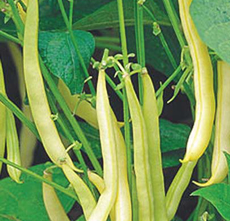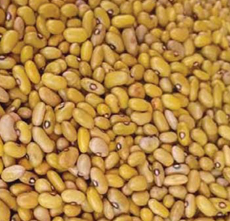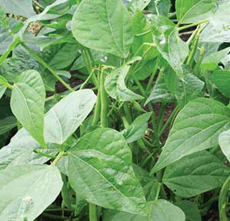Future of Beans has Never Been Brighter
 “Beans farming in Kenya is not as common as maize. However, it is one of the common grown crops in Kenya”.
“Beans farming in Kenya is not as common as maize. However, it is one of the common grown crops in Kenya”.
You probably interact with beans often enough to react when it appears in a story headline. You probably also note that when there is a discussion on main cash crops in the country, beans are not usually among the first suggestions. Yet, Kenya earns a fortune from the export of beans, as much as it benefits from having a population pumped with the proteins that beans boast. It, therefore, should be in the national discourse that beans production declined by 10.8 per cent to 8.3 million bags in 2019.
Kenya harvested 8.5 million bags of the legume in 2015, 8.1 million in 2016, and an impressive 9.4 million in 2017, the Kenya National Bureau of Statistics (KNBS) data show.
The figures declined to 9.3 million in 2018 and later to 8.3 million in 2019. That was a drop of a cool one million bags in the year. The year 2019 will be remembered as grim and unforgiving to the agricultural sector. The year began with a semi-drought, the long rains usually experienced around April failing. The Famine Early Warning Systems Network blamed the failure of Kenya’s long rains on tropical cyclone Idai, which “redirected moisture away from the region”.
When the KNBS releases their next batch of data, a possible increase in production in 2020 will amplify the extent of decline experienced in 2019.
In 2017, when production of beans was at its peak, the price was also the highest recorded in the past half a decade, in the latest Economic Survey of 2020.
A kilo was going for Sh93.96 in March of the year, the peak price, against Sh77.01 in March 2019. The head of Horticultural Crops Directorate (HCD), which regulates the horticulture industry through licensing and application of rules, in a recent interview, put French beans among crops that are, and will remain, lucrative for the Kenyan market.
He highlighted some of the issues affecting Kenyans in their quest to maximise production of some of these crops, including beans. “Farmers should focus on high value horticultural crops such as French beans, snow peas, carrots, onions. But farmers also need access to farming quality inputs, credit facilities and capacity building on good agricultural practices.”
Majority of Kenyans grow beans as a subsistence crop, often planting in rows alongside other “main” crops.
“Beans farming in Kenya is not as common as maize. However, it is one of the common grown crops in Kenya. In fact, it is often inter-cropped with the main crop for maximum absorption of nutrients by both plants,” writes Oxfarm, a website that is a farmers’ market place. But beans are often a part of every meal.
 Grown as cash crop
Grown as cash crop
“Beans popularity in Kenya may be due to the fact that bean recipes are numerous and beans are consumed almost with everything and contain quite a considerable amount of protein,” writes Oxfarm.
The market for beans is high locally and internationally. Data from HCD showed that beans earned Kenya at least Sh300 million a month in 2020.
Like for every product, it is just the rare types of a beans that fetch the best prices. With demand exceeding supply, bean species that grow only in select places are always sure to fetch market. “Depending on quality and type of beans, the prices per 90 kg bag of beans ranges between Sh7, 000 and Sh12, 000. Particularly, beans fetch better prices when it is not harvesting period.
The varieties
Some varieties are also more expensive than others. The rose coco and kidney beans, for instance, are a bit pricey compared to the other varieties which are available in large quantities. Beans with a high supply across the country will fetch a lower price compared to those that thrive in specific areas.
Prices aside, the market for beans, often part of githeri, an easy-to-prepare staple food in parts of the country, is always available, Oxfarm says.
“Irrespective of the type of beans, the market is always there and since it’s a grain, you can store it and sell when the prices are high.”
Farmers in some locations have resorted to growing beans as a cash crop, backed by suitable ecological factors, including favourable temperatures and rainfall.
“Beans thrive in temperatures of about 20 to 25 degrees, altitude of between 1,000m to 2,100m above sea level, rainfall of between 900mm to 1,200mm per year and a soil pH of 6.5 to 7.5.”
Last year, a group of farmers in Kieni, Nyeri, started growing yellow beans for commercial purposes, after being drained economically in seasons that saw their other cash crops fail due to lack of adequate water. “Before I got into commercial yellow bean farming, my focus was potatoes, french beans, snowpeas, capsicum, which I often sold off to brokers to make money,” said Robert Kahoro, a farmer in Kieni.
Bean farming was only for local consumption and he had not discovered that he could do it as a business. But now he is reaping big. “One acre of yellow beans can earn me up to Sh90,000, and that with a low cost of production unlike other horticultural products, and they can be stored in hermetic bags for as long as I need to ensure I get the best deal for my produce,” he said, adding that he had joined hands with twenty other farmers to supply beans in large scale to some of Kenya’s biggest retailers.
Like Mr Kahoro, farmers planting beans are unlikely to meet a dearth of markets. “There is high potential because demand for horticultural produce for local and export market is increasing with rising world population,” said HCD director. To change from subsistence to commercial farming is probably the masterstroke.
Good Farming Practices
Before planting the legume crop, farmers must make sure the farm is well-prepared. Ploughing is done twice and this has to be done before the onset of rains.
How the crops are spaced during planting, also matters a lot. Something between 5 to 10 centimetres, with rows at one and a half feet, is good enough.
Using rows when planting is encouraged for easier management of the crop during production. Spacing is also key to quality production. Overpopulating the plants might lead to nutrient deficiency in the soil.
At about 21 days after germination, weeds are controlled either through weeding or application of herbicides. After clearing the weeds, vegetative herbicides are applied.
Second weeding is done at six weeks ahead of the flowering stage that occurs at between 45 to 50 days after germination. Weeding is discouraged after flowering.
With proper farming practices, yellow beans mature after two and half months compared to other varieties that take about three months. An acre has a capacity of producing between 15 to 18 bags of 90 kilos.
One of the biggest advantages of growing yellow beans is the ready market and each kilo can fetch between Sh75 and Sh120.
One of the biggest mistakes many yellow bean farmers make is intercropping the crop which affects production.
 Intercropping
Intercropping
Farmers are discouraged from intercropping yellow beans with crops like maize as that affects quality. When intercropped with maize, they acquire a whitish colour.
Disease Control
Disease and pest control is also key in bean farming.
Pest and diseases are controlled through spraying failure to which, quality and quantity of production will be affected.
For quality production, farmers are advised to purchase seeds from certified sellers or from the Kenya Agricultural and Livestock Research Organisation (Kalro). However, getting the right seeds is not an assurance for high yields as there are a lot of substandard herbicides and pesticides in the market which water down any other best practice applied by a farmer.
Most farmers have been a victim and the government should put in place necessary measures to cushion farmers against unscrupulous traders who only care about profits. Another challenge giving farmers sleepless nights, is the changing weather patterns as sometimes it is hard to predict whether the rains will be sufficient or too much for his crop.